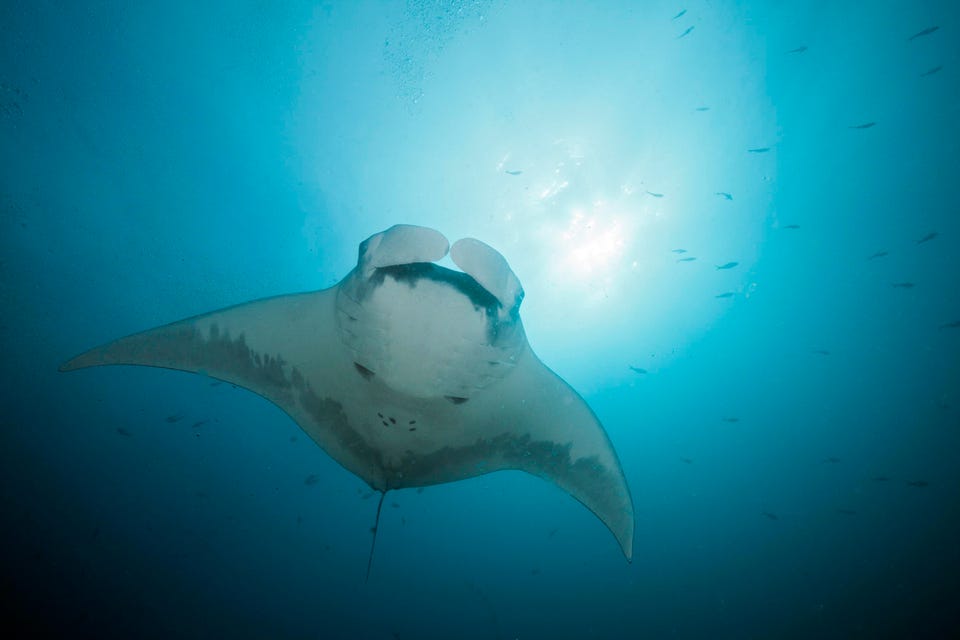Science How 3D Models Have Shed Light On Manta Rays Melissa Cristina Márquez Contributor Opinions expressed by Forbes Contributors are their own. I write about the latest, exciting research on sharks worldwide! New! Follow this author to improve your content experience. Got it! Jul 17, 2022, 09:33pm EDT | Share to Facebook Share to Twitter Share to Linkedin The state of Florida is teeming with life year round.
From snow birds to actual birds, plentiful marine and terrestrial life and a variety of habitats, there isn’t much to love of the sunshine state! Just ask manta rays, who consider the southern parts of the state an important region. The Florida Manta Project has conducted research in South Florida for several years, observing an urban manta ray population off the coast of Palm Beach . “We see almost exclusively juvenile manta rays in south Florida that regularly use the same sites (47% are re-sighted), indicating that south Florida is a rare manta ray nursery habitat,” explains the group on their website.
The most alarming threat facing manta rays is targeted overfishing due to the increasing trade of . . .
[+] manta ray gill plates. Universal Images Group via Getty Images The largest of all rays and one of the largest fish in the ocean, mantas are named for their unique appearance, with their common name meaning ‘blanket’ or ‘cloak’ in Spanish. Feeding on krill and zooplankton, these filter feeders are often seen forming long chains to eat the microscopic animals that drift along in the ocean currents.
In 2018, manta rays were added to the U. S. Endangered Species Act as a Threatened species, but there is still insufficient data to determine critical habitat for manta rays.
“This area is super important to protect because it can be a refuge for manta populations around the world,” said Jessica Pate, research scientist with the Marine Megafauna Foundation, who pioneered the study of the South Florida population. But how is a scientist supposed to really study an animal that is known to be elusive? Teamwork. The project has years of data collected through in-water photography, drones, aerial surveys, and satellite and acoustic telemetry, all used to help researchers study the biology and ecology of these animals.
A research group within the Marine Megafauna Foundation , they’ve decided to collaborate with Digital Life Project at the University of Massachusetts and the ANGARI Foundation (a private operating foundation headquartered in West Palm Beach). Using their large database of photography and videography – and adding more to it for this special project – the Florida Manta Project collected measurements to create one-of-a-kind scientific and educational tool. A juvenile population of giant manta rays has been discovered in South Florida, and it’s being .
. . [+] studied as the federal government draws up plans for protecting the species.
While the main threats to manta rays lie in the Pacific Ocean, where they’re targeted for use in traditional Chinese medicine, advocates say that peril just increases the significance of the U. S. population.
Bryant Turffs “The ANGARI Foundation and the Digital Life Project understand that education and public awareness are vital for conservation, and both have experience modeling threatened marine life,” a press release explained. “A few years ago, the ANGARI Foundation partnered with Digital Life on a 3D shark model that resulted in a first-of-its-kind, animated great hammerhead shark. The shark model has since been used for research and education purposes.
” MORE FOR YOU New Research Finds A Connection Between Domestic Violence And These Two Personality Disorders This Scientist Helps Andean Forests And Ecuador’s Women In STEM Exceptional Fossil Preservation Suggests That Discovering Dinosaur DNA May Not Be Impossible Together they’ve created another 3D model based on an 8-foot (2. 4 meter) juvenile male manta named Skye. Just how whale shark markings are unique to the individual, like a person’s fingerprint, so are the underside markings of a manta ray.
“Researchers previously observed Skye in June 2020 and have since spotted him more than 20 times. Using collected footage and measurement data, the animator recreated his shape, gills, mouth, and other attributes, including identifying details and texture. Even the ray’s scars from a boat propeller are noticeable!” the team said.
“The model was also rigged with detailed animation, which accurately depicts Skye’s swimming motion and the lifelike movement of his cephalic fins during feeding. The model of Skye is the only accurate 3D model of a manta ray and an invaluable digital representation. The impeccably captured look and movements, combined with his well-documented, friendly personality, likely make Skye the most interesting manta ray in the world.
” The 3D model can also be used to study energetics of movement and manta ray body condition and health. The collaborators hope that Skye’s model can help fill knowledge gaps in manta ray morphology, and swimming and feeding motions and behaviors. “It also promotes manta ray conservation and awareness,” the ANGARI Foundation commented, pointing out that mantas here are frequently seen entangled in fishing lines, and with injuries from boat propellers.
Despite their size, manta rays are completely harmless to humans. To further promote marine life education in Florida, Marine Megafauna Foundation has created seven free science lesson plans for elementary school students in third to fifth grades, available now. Follow me on Twitter or LinkedIn .
Check out my website . Melissa Cristina Márquez Editorial Standards Print Reprints & Permissions.
From: forbes
URL: https://www.forbes.com/sites/melissacristinamarquez/2022/07/17/how-3d-models-have-shed-light-on-manta-rays/



